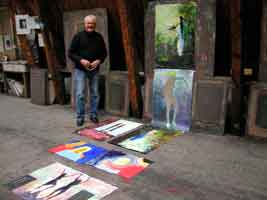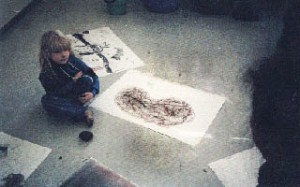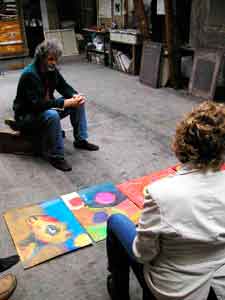In the text of the book you will often find the word mediator. In the practice of the relationship between therapist and client there is a strong similarity between the outlook in this book and the theories of the Israeli pedagogue Reuven Feuerstein. A mediator is a guide of learning processes in a broad sense. He/she has a bridging function between the stimuli offered by a learning environment and the client who reacts to these in order to develop and to learn.

the client can discover these qualities and significances for himself/herself and internalize them. In doing so he/she looks and the client’s reactions and mental and manual actions; how he/she thinks and acts. Observing and organising of the data, articulating these observations, interpretations, thoughts and actions contribute to the development of the personality in the areas of cognitive, emotional and social intelligence.
R.Feuerstein’s Mediation-theory provides concrete instructions for the coaching tasks of therapists.
Out of his/her own life experiences the therapist knows the cultural significance and material qualities of the subject matter. He/she creates practice situations in which Therapists play a key role in guiding learning/life processes. They are the translators of the cultural heritage and as mediators (term by R. Feuerstein) can guide the client in forging a link between the inner and outer world. The therapist may or may not see the signs and significance based on the images created by the client. In either case it is paramount that the therapist as much as possible invites the client to speak and asks open ended questions. This will start up a dialogue between the client and the drawing or clay image he/she has made.
The dialogue is a living reflection of the work that has been created out of the relationship between the client’s inner and outer world. The aim is for the client to become aware of the relationship between the inner images and their source as well as the stimuli from the outside world: the cultural reality and/or nature (Paolo Freire/Cultural action for freedom).
The trialogue comes into being via open ended questions posed to the client by the therapist and the significance or interpretations the client himself or herself through the dialogue gives to the images he/she has made. The therapist is in fact the facilitator of the process.
Open ended questions are questions in which the therapist does not include any of his or her own interpretation or judgement, so the client can give his/her own answer based on the images.
The aim of the open ended questions is for the client to become aware of his/her own personal learning path and development possibilities.
These systems of meaning are part of the cultural heritage.
An important characteristic of the dialogue is the perspective out of which the questions are posed to the client. The dialogue may also evoke and make debatable existential questions the client has and which until then have not been discussed or answered. These questions may not always be answerable. It is even debatable whether all questions should be answered. Often just expressing them is useful and sufficient.

Each therapist explores his or her own possibilities in drawing their own boundaries in their role of coach. You may not identify with or feel comfortable in the role of coaching the client in the dialogue. The practical execution of the exercises in itself often already gives the client so much that this in many instances will be more than suffice.
The client knows all his/her own inner images. That is why it is important that the therapist gives the client a lot of space and does not express his or her own interpretations and judgements. Only if the group therapist knows something specific about the client, he/she may carefully make ‘open ended’ suggestions to let the client himself or herself find and express an emotion or insight in an answer. Obviously this may be a very sensitive issue as regards trust, especially in group therapy.

Approach the client as little as possible in the sense of “well done” or “how beautiful. This does not correspond with his/her feelings regarding the drawing or the clay object. This is an observation based on esthetics and does therefore not correspond to what it may mean to the client. (Johannes Itten-Bauhaus: ‘no aesthetic logic’ ‘/ Alice Miller: ‘ a childhood in images’. A client (especially a child) does not have this aesthetic judgement when he/she has drawn out of emotion. However it often happens that adults/clients draw out of the idea that something has to be beautiful. . Clients/ children pick this up from third persons. As a therapist this method provides you with the tools to make the client get past this.
The experiences with this method show that clients become more aware of their own place in relation to the outside world. The result is acting in a more purposeful and conscious manner and an increase in the client’s ability to concentrate and especially in confidence.
Essentially these are the same elements: increasing of insight in the world and matter, gaining own experiences out of the own self, applying knowledge and experiences in new situations and integrating these into the personal system of emotions, knowledge and acting; a never ending cycle of learning.
